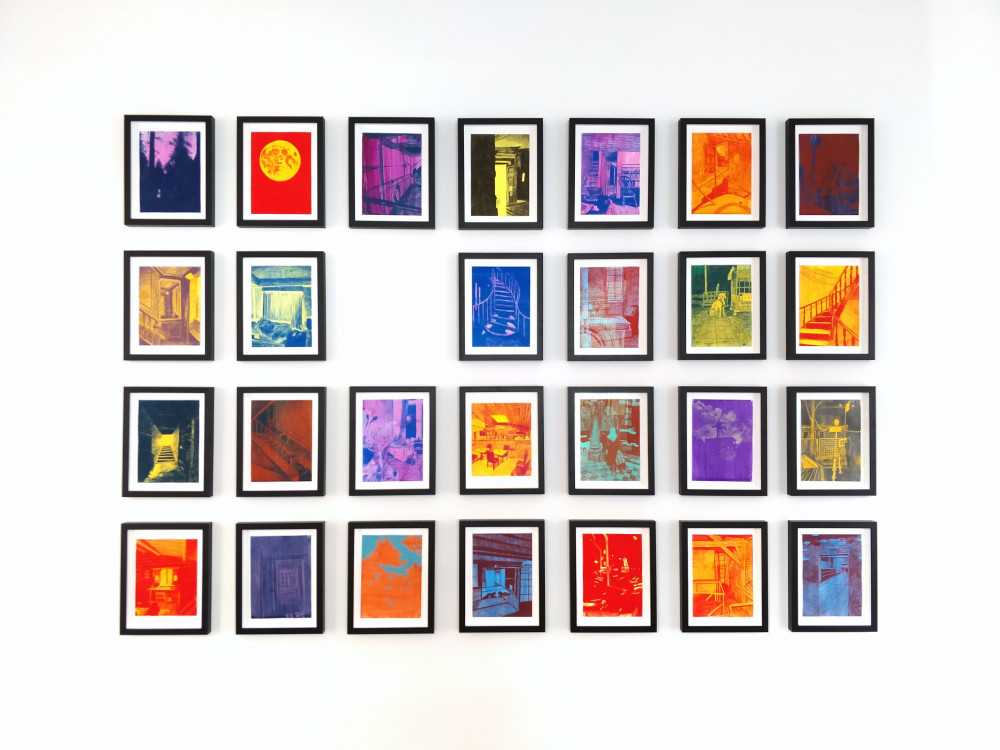Since the late 90's, Morten Schelde's unmistakable pencil has played a leading role on the Danish art scene. His works are held in esteemed institutions such as the National Gallery of Denmark, Arken and Louisiana, he's had numerous museum shows in Denmark and abroad, and in 2010 he was part of the elite group of artists, who decorated the Palace of Frederik VIII.
For the past couple of years, Schelde, who is most readily associated with intense, surreal, often monochrome drawings, has been preoccupied with painting, which became clear in his first solo show with Hans Alf Gallery, "New Paintings" in 2017. Now, however, Schelde has returned to his paper and pencils with renewed vitality, poignancy and fantasy.
Art historian Cecilie Marie Dalhoff from Kunsten Museum of Modern Art in Aalborg writes the following about Schelde's new exhibition, Stages:
"In Morten Schelde’s artistic universe the medium of drawing is intended as a space for experiences and encounters. Within the frame of the artworks the stage is set for an inspiring mixture of past and present, unfolding in distinctive and personal interpretations of a life lived. Standing before one of Schelde’s visually powerful, multi-layered drawings we intuitively appreciate how the work of the hand bestows expression and meaning to the many repetitive everyday still-lifes, functioning between apparent normality and discreet catastrophe. The scenes depict a wide range of biting dichotomies as Schelde’s view on society seems to be torn between a lust for life and loss of trust, an extreme materialistic distress and a never-ending happiness materialised in Danish Modern design. The exhibition partly takes its title from these acute and well-composed stages, which unfold before us almost true to life size and seem ready for us to explore. But something is not quite as it seems at first glance. The imagery appears distorted and characteristic.
In his predominantly monochrome depictions of the worlds of yesterday and today Schelde finds his motives in a mixture of vast amounts of non-chronological photographic material, which he, over the course of more than 20 years, has meticulously collected and transferred repeatedly until the motives have fallen into place in the right scale. The sum of the many autobiographical works takes us from Norway to Berlin and Ghana – from the stages of early childhood to life as an established artist. The works thus represent time gone by both in method and motive. The temporal aspect of the word ‘stage’ is from this perspective just as important as the work’s theatrical qualities.
The visible journey of the motive makes it possible for us to trace the images as they progress; as we view the various works in the exhibition we grasp the temporality embedded in the depicted scenes and the process. In a way the deserted scenes almost resemble used movie sets or theatre stages. The visible almost seems momentary and transitory in Schelde’s works, while the rampant process preceding it is invisible if not known. In the same way as putting something on stage in the theatre is akin to putting something under the light, rendering the invisible visible, realising an artistic concept, Schelde uses his drawings to shed light on a procession of familiar and intimate everyday stages and situations. Through this he focuses on the everyday drama of modern day family life and all the untold tales of society’s present day Odysseuses as well as looking back on his own background. It is therefore characteristic of and essential for Schelde’s work that the situations do not reveal their inhabitants. Instead the empty scenes open themselves up to their audience and allow each visitor to create their own narration. The exhibition thus becomes a testament to the significance of the lived life that for most of us contains a vast accumulation of seemingly ordinary situations that Schelde encapsulates and invites us to explore anew."











